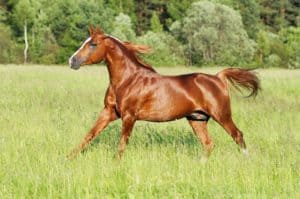Working With a Nutritionist
- Topics: Article, Nutrition, Working With a Veterinarian
Using a qualified equine nutritionist can help you manage your horses to live and work better.
Feeding horses properly is an art and a science. Sometimes it helps to work with a nutritionist to find out which grains best complement available forages, to design the best diet for a broodmare or a performance horse, or to resolve a nutritional problem. Why? Because sorting the best diet for your horse from the blinding array of commercial feeds and supplements, or from more than 100 basic feed ingredients last listed by the 2007 Nutrient Requirements of Horses, can be daunting at best, and dangerous at worst. But regardless of your horse’s feed needs, Burt Staniar, PhD, assistant professor of equine nutrition at The Pennsylvania State University, says horse owners need to understand the building blocks of diet. “Not only must we supply proper amounts of certain minerals and protein a certain horse requires, but also be aware of energy in the diet and how it affects the horse’s metabolism.”
Feeding a horse is like building a house. You can buy all the lumber and other materials needed, but the house can’t build itself. You need the means to put it all together, and energy is the driving force. “We must understand how the way we feed horses affects growth, maintenance, and performance,” adds Staniar.
Horse owners often want to create their own rations, and a good nutritionist can help with this. He or she has the years of training to understand how these materials go together, and how to balance everything and make it come out right.
“Many things affect nutrition, such as environment and genetics,” explains Staniar. “Genetics affects a horse’s potential for growth or performance, but his environment is a crucial factor in reaching this potential. Management is a big factor; you must be aware of all the aspects of the environment and how they interact with one another
Create a free account with TheHorse.com to view this content.
TheHorse.com is home to thousands of free articles about horse health care. In order to access some of our exclusive free content, you must be signed into TheHorse.com.
Start your free account today!
Already have an account?
and continue reading.
Written by:
Heather Smith Thomas
Related Articles
Stay on top of the most recent Horse Health news with












